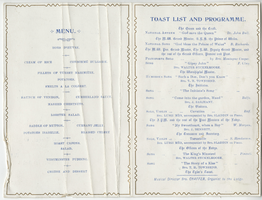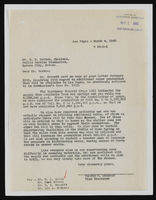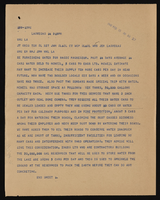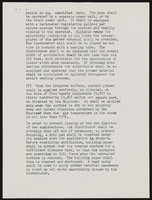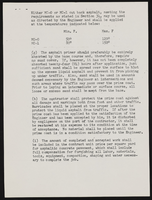Search the Special Collections and Archives Portal
Search Results

Film strip of individuals or Hoover Dam construction, image 011: photographic print
Date
1930 (year approximate) to 1939 (year approximate)
Archival Collection
Description
This photograph has three images. The first one (0272_0078) reads "'Form Raising Crew' - cont. - Whitie, Indiana 'Hoosier', lining the bolt up from inside. Always looking for a hammer, or bar, when it was time to climb over the top." The second one (0272_0079) reads, "Drilling jumbo in mouth of spillway tunnel," as a handwritten inscription. The third image (0272_0080) reads, "Nevada spillway with flood gates lowered. Notice size of man in gates. Constructed to prevent flood waters from overflowing dam. Each spillway - capable of passing 200,00 cu. ft. per second."
Image
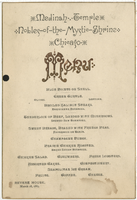
Nobles of the Mystic Shrine, Medinah Temple event menu, March 28, 1885, Revere House
Date
1885-03-28
Archival Collection
Description
Note: Nobles of the Mystic Shrine are commonly known as Shriners Restaurant: Revere House Location: Chicago, Illinois, United States
Text
Pagination
Refine my results
Content Type
Creator or Contributor
Subject
Archival Collection
Digital Project
Resource Type
Year
Material Type
Place
Language
Records Classification

